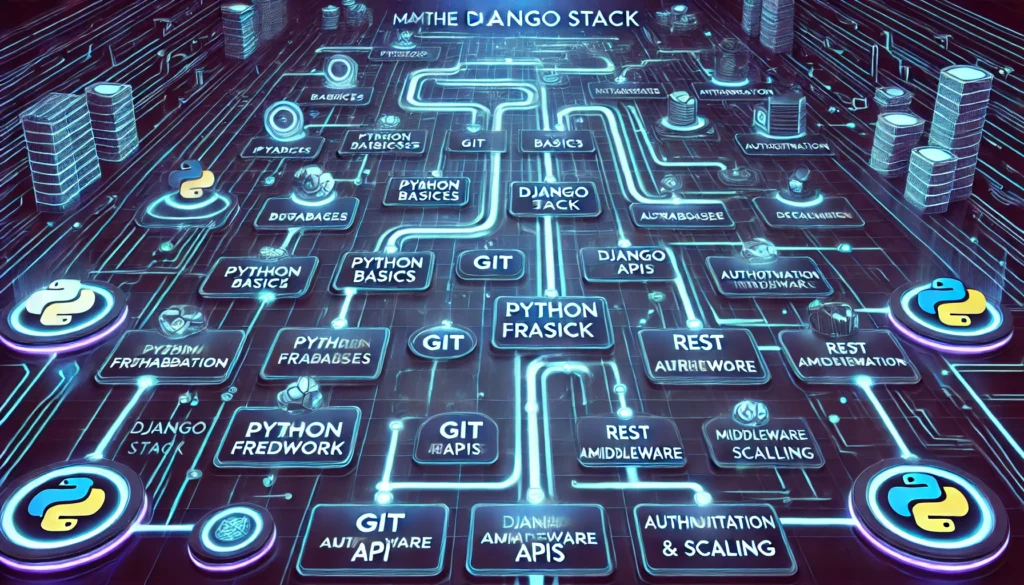
Introduction
The Django stack, consisting of Python, Django, and PostgreSQL/MySQL, is a powerful and scalable framework for building full-stack web applications. This guide provides a structured roadmap to mastering the Django stack, covering learning levels from beginner to advanced, middleware, validation, and deployment strategies.
Learning Levels
Beginner Level (1-3 Months)
1. Python Basics
- Learn Python syntax, data structures, and OOP concepts.
- Understand Python modules, virtual environments, and package management (pip).
- Practice basic scripting and automation.
2. Git and GitHub
- Learn Git basics (commits, branches, merges).
- Work with GitHub for version control and collaboration.
3. Basics of Databases (PostgreSQL/MySQL)
- Understand relational databases.
- Learn basic SQL queries and database normalization.
- Install PostgreSQL/MySQL and practice CRUD operations.
Intermediate Level (4-6 Months)
4. Introduction to Django Framework
- Install Django and create a basic project.
- Understand the MTV (Model-Template-View) architecture.
- Work with Django apps, settings, and project structure.
5. Building RESTful APIs with Django REST Framework (DRF)
- Install and configure Django REST Framework.
- Create API endpoints and serialize data.
- Implement authentication and permissions.
6. Templating and Frontend Integration
- Use Django templates for dynamic content.
- Integrate Bootstrap and JavaScript with Django.
- Use AJAX for frontend-backend interactions.
Advanced Level (6+ Months)
7. Authentication and Authorization
- Implement user authentication using Django’s built-in auth system.
- Use JWT (JSON Web Token) for token-based authentication.
- Manage user roles and permissions.
8. Middleware in Django
- Understand built-in middleware (security, session, authentication).
- Create custom middleware for request/response handling.
- Use middleware for logging and error handling.
9. Form Validation and Security
- Use Django forms for input validation.
- Protect against common security threats (CSRF, SQL Injection, XSS).
- Implement secure password handling with Django’s authentication system.
10. Payment Gateway Integration
- Integrate Stripe or Razorpay for payments.
- Use Django signals for transaction handling.
- Implement webhooks for payment verification.
Deployment & Scaling
11. Deploying Django Applications
- Deploy on cloud platforms like AWS, Heroku, or DigitalOcean.
- Use Gunicorn and Nginx for production deployment.
- Set up environment variables and database configurations.
12. Performance Optimization
- Use caching (Redis, Memcached) to improve performance.
- Optimize database queries with indexing and ORM best practices.
- Implement load balancing and scaling techniques.


